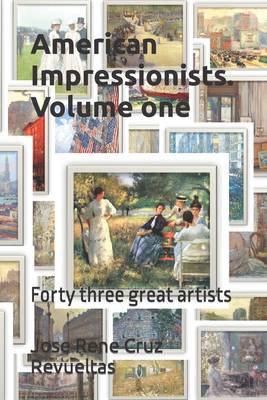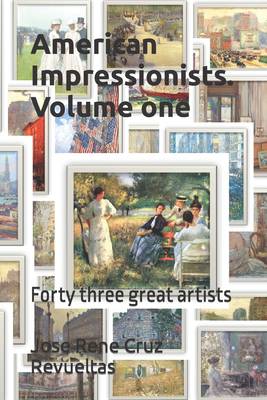
- Retrait gratuit dans votre magasin Club
- 7.000.000 titres dans notre catalogue
- Payer en toute sécurité
- Toujours un magasin près de chez vous
- Retrait gratuit dans votre magasin Club
- 7.000.0000 titres dans notre catalogue
- Payer en toute sécurité
- Toujours un magasin près de chez vous
Description
In Paris on April 15, 1874, 30 young avant-garde artists, including Paul Cézanne, Edgar Degas, Claude Monet, Camille Pissarro, Auguste Renoir, and Alfred Sisley, held the first exhibition of their pictorial works. The works exhibited reflected their search for a new form of artistic expression. After this exhibition and teasingly, the Charivari newspaper journalist based on a painting exhibited, Impression, Soleil Levant, by Claude Monet, called them Impressionist.
These artists sought to express the first pure and straightforward impression of the things in their pictures. They felt it emotionally without worrying about the generally accepted rules. The paintings were not the result of intellectual reflections; they represented the painter's impression, that is, the effect produced by the action of external objects on his senses. These artists strove to express not only their knowledge of things or what their training had taught them on their canvases. His vision depended on light and its variations, which were the objects of the paintings. Landscapes preceded any other form of an image, whether religious, mythological, or historical.
Nature was his main concern; most paintings were made outdoors without prior notes. Therein lay its great originality; They were paintings that began and ended in the same place and were done as quickly as possible because of nature change.
These artists tried to capture fleeting impressions. The sea, the cycle of the seasons, the mobile clouds, the sun and its vibrations, the smoke and its imponderable forms, the liquid element, the snow were also subjects of attention.
Before them, no other painter had given nature an image so faithfully alive and luminous.
The first exhibition was an economic failure; there were few sales. However, the new esthetic vision proposal quickly spread to other countries, including the United States.
Between the 1890s and 1910s, American Impressionism flourished in the so-called "art colonies"; groups of artists that lived and worked together shared the new aesthetic vision.
Despite being initially rejected, the Impressionist movement represents a milestone in art history due to its impact on ordinary people. Most of the pictures of its prominent representatives are in the world's great museums, where millions of people line up to be able to contemplate them. Millions of reproductions of their works are in books, lithographs, t-shirts, matchboxes, paper napkins, bags, etc.
Today, the pictures of the artists who participated in the first Impressionist exhibition are valuated in millions.
In this book, we present a sample of the pictures of several American artists who participated in this artistic movement; the beauty of their works is not far behind those of European artists.
Albert Henry Krehbiel, Alson Skinner Clark, Catherine Wiley, Childe Hassam, Colin Campbell Cooper, Daniel Garber, Dennis Miller Bunker, Edmund Charles Tarbell, Edward Charles Volkert, Edward Henry Potthast, Edward Simmons, Edward Willis Redfield, Ernest Lawson, Everett Warner, Frank Weston Benson, Frederick Carl Frieseke, Guy Rose, Henry Bayley Snell, John Henry Twachtman, John Ottis Adams, Joseph Rodefer DeCamp, Julian Alden Weir, Leonard Ochtman.
Spécifications
Parties prenantes
- Auteur(s) :
- Editeur:
Contenu
- Nombre de pages :
- 260
- Langue:
- Anglais
- Collection :
Caractéristiques
- EAN:
- 9798415895540
- Date de parution :
- 15-02-22
- Format:
- Livre broché
- Format numérique:
- Trade paperback (VS)
- Dimensions :
- 152 mm x 229 mm
- Poids :
- 353 g

Les avis
Nous publions uniquement les avis qui respectent les conditions requises. Consultez nos conditions pour les avis.






